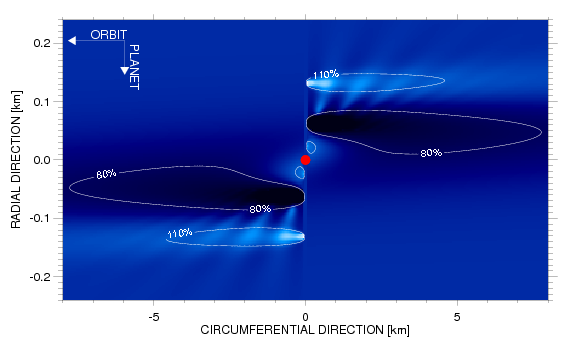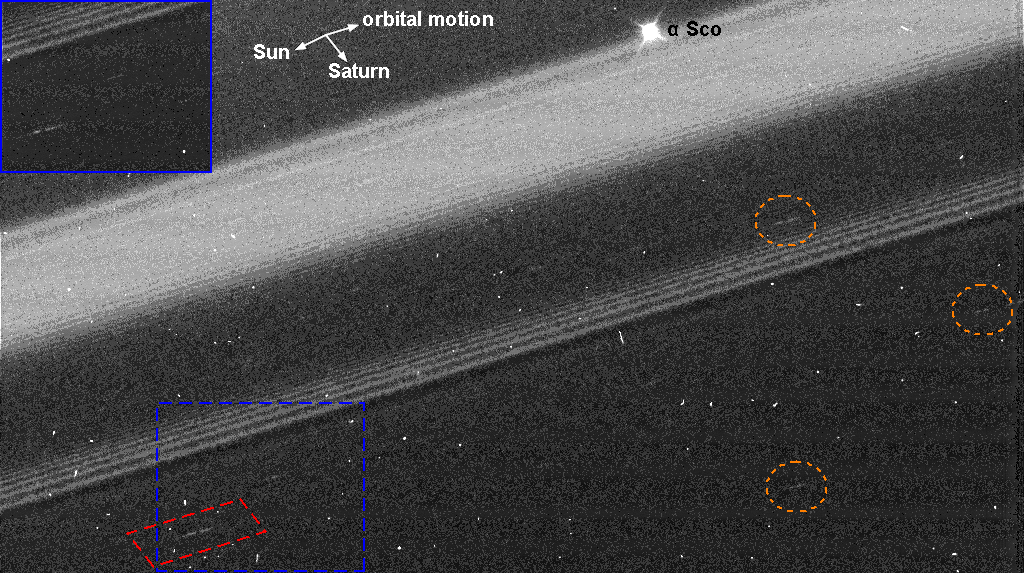
Kilometer sized propeller-shaped features have been predicted in Saturn's rings as an indication for embedded moonlets. Four such propellers have been identified so far in images returned from the NASA/ESA spacecraft Cassini. They form when the gravity of a 100 meters sized embedded moonlet perturbs the surrounding ring material, which predominantly consists of icy particles of less than 10 meters in size.

We have found eight new propellers in Saturn's A ring. It turns out that all propellers, including the four identified previously, populate only a relatively narrow annulus of about 3000 kilometer width in that ring. We show that it is extremely unlikely that Cassini cameras spotted them just by chance in this region, while images of other parts of the ring system coincidentally are free of propellers. This means that the 100 meter sized moonlets, responsible for the propellers, are significantly more abundant in this belt than elsewhere in the rings. This bears strong implications for the understanding of the formation and evolution of planetary rings.
Meanwhile (2012) the Cassini spacecraft has detected a few hundred of such skyscraper sized moonlets in the A but also in the dense B ring of Saturn and it is expected that millions of them populate the main rings.
The sunset a the ring during Saturn's Equinox in August 2009 revealed that the propeller-structures are clearly elevated also in the vertical direction which has become obvious due to the shadows these propellers cast onto the unperturbed ring plane.